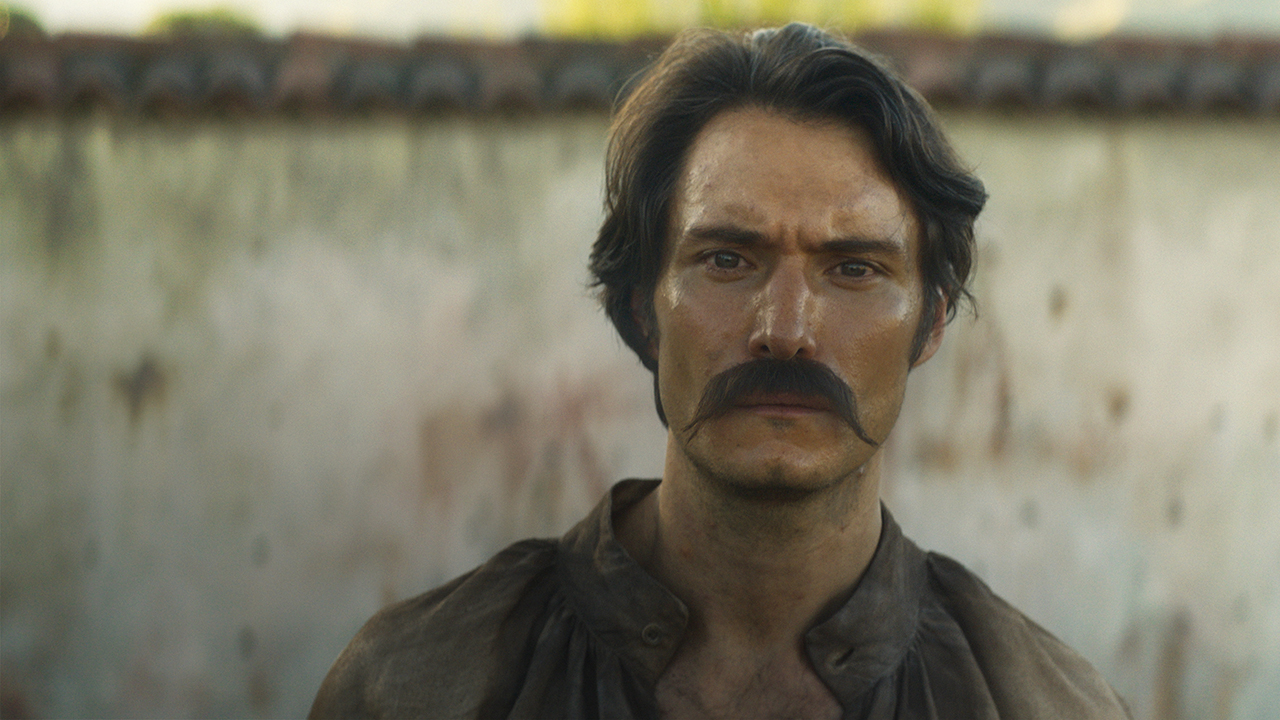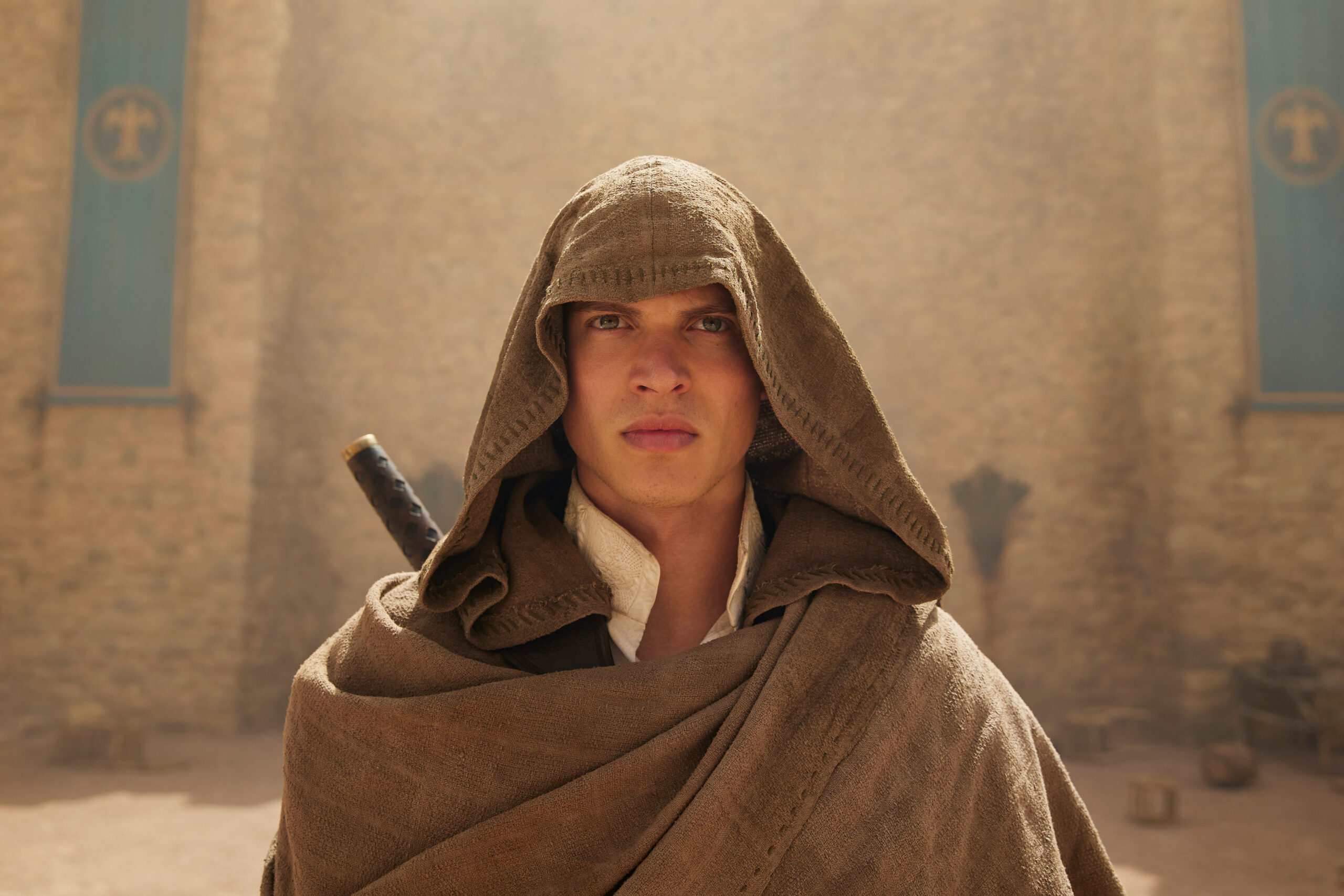![]()
Two college scientists manage to harness the power of the human mind by reading thoughts with a machine. But, forces unknown want that technology.
“Listening†is the directorial debut for Khalil Sullins and stars Thomas Stroppel and Artie Ahr as the best friends inventing this cutting-edge technology.
Here’s the synopsis:
David (Thomas Stroppel) and Ryan (Artie Ahr) hope inventing telepathy will solve all their problems, but the bleeding-edge technology opens a Pandora’s Box of new dangers, especially when it falls into the wrong hands. In a color-saturated vision of present-day science fiction, friends are forced against each other in a life-or-death battle over not only the privacy of our minds, but the future of human free will itself.
Latino-Review had an exclusive phone interview with Sullins on his film. We talked about the challenges on this psychological indie thriller and the real technologies and theories behind it.
“Listening†will have its world premiere at the Woodstock Film Festival this weekend and then at the St. Louis International Film Festival on November 21-23.
Read the full interview below.
Latino-Review: I checked out your film and it was terrific. It was nothing I’d expected. So how did you come up with the idea for this film?
Khalil Sullins: Before I write any movie, I write every idea I come up with for weeks. I would have over 100 ideas or so and then pick the best of the best. It’s to choose the best at the time and invest into writing a script.
For this one, I wanted to explore on how technology and communication change so rapidly. I wanted to look at on how it affect us on a human level. It’s similar to the ways social media like Facebook and Twitter on where we will be putting our thoughts out there faster. We’re getting [thoughts] out there, but we’re not necessarily better communicators.
The first original seed was what if someone invented telepathy. Then we wanted to explore on all the potential consequences of that. That’s where it started.
Latino-Review: Did you have to do extra research? The subjects, themselves, with telepathy and neuroscience—that goes beyond on what I had learned back in college.
Khalil Sullins: [Laughter] For two or three months, I did a lot of research particularly on what’s being done out there right now. By the way, there are a lot being done right now. DARPA, the military and different colleges around the college are trying finding ways to read our thoughts.
There are two areas I thought that are popular right now. One is for amputees by getting us to read our thoughts to move a mechanical arm. And then there’s the military who are trying to make helmets to talk to other soldiers without saying anything. Or maybe even video game controllers in which you can think up, down, left and right.
So I took on what is going on with that and combined it with nanotechnology. I found this research where scientists created this nanotube transistors embedded into human cells and powered by ATPs. So I was very surprised on how close we were.
So I thought if we can combine nanotechnology with the brain interface technology—it would make sense for a movie and probably never work in real life. After we finished production, it was kind of crazy because I started reading articles on what they’ve done exactly I’ve theorized.
They’ve created these nanotube electrodes and injected into the brains of lab rats. Then have their brains connected through wires and have the rats go through mazes. The rats were timed, but with connected brains—the rats should complete it faster through shared information. So it’s all very real and very possible.
Latino-Review: So hold on a second, you’re saying this is actually happening right now. This is not science fiction, but science reality.
Khalil Sullins: Yeah, that’s our running joke. By the time the movie hits theaters, we’ll be calling it a historical drama. It’s the exact thing of having nanotube electrodes so microscopic that you can inject them into the cerebral spinal fluid to attach to every little neuron in your brain. They’ve already done it with lab rats, but not with humans.
And the best part is that it almost looks like it in our movie. The rats have shaved heads and wires sticking out of their brains to be connected to each other. They would have two rats go through the exact same maze, but connected through wired shared information. That article came out like nine months ago. It’s very leading edge and very possible.
When I wrote the script, I thought there were a million reasons on why it wouldn’t work. But, scientists are doing it right now.
Latino-Review: The one thing I was amazed while watching this film—I never really thought that it was a low budget movie at all. Whatever you did, I thought it was a well-balanced production. How did you manage to pull that off.
Khalil Sullins: We got amazing people on board. It was talent attracting talent. It all started with the script to get us great actors. Then it got us an amazing cinematographer Blake McClure. His career is about to take off since he just won an ASC award for his work on “Drunk History.†Alec Contestabile, our production designer, was incredible and did such an amazing job. Once we had the amazing footage, we got this great editor with Howard Heard and then the composer with Ed White. Then we moved on to an incredible post production company and post production sound. There were just so many talented people by putting in their best work.
We did our best to put our money on screen, such as going to Cambodia. A lot of the indie films will try to shoot it all in a week and all in one house. We had over 30 locations across the globe. It all looked good up on the screen.
Latino-Review: I noticed in the beginning of the movie and towards the end that the scenes were in Cambodia. It almost looked like Angor Wat.
Khalil Sullins: Yeah, we went to the Angor region there. Angor is a big area with a bunch of different areas. We were building a slightly mystical place there. We didn’t want to go straight to Angor Wat. So we shot at the different temples in the region, but not Angor Wat itself. It was eight or nine different locations which was stitched together into a large temple.
Latino-Review: I’ve been to the Angor region twice in my lifetime so I recognize the area immediately.
Khalil Sullins: Yeah, it’s great there. We chose the region because of the huge vines growing on the temples. It helped create this visual motif throughout the film. It almost created on what the insides of the brain looked like. These vines looked the neurons inside the brain. Even with the garage set, we tried to design it with wires andlights everywhere. They echo in what it’s like neurons inside the brain.
Latino-Review: With all the complexities on this production, what was the greatest challenge for you?
Khalil Sullins: For me, it was the first time going through this. It was my first featured film. It all went on amazingly well since the first week. Everything came out great. Our motto on set was “Don’t screw it up.†It was looking very good and all we need to do is to keep it up.
The number of locations was definitely a challenge especially with a six-week shoot in Los Angeles. There were about twenty-five locations there. In some cases, we had four locations in one day. My wife, who is a producer, often booked a location the day before we get there. It was like a speeding bullet train and she just building the tracks in front of the train. That’s a definite challenge.
I’m getting to that area that is more like I’m learning as I’m doing it. Now it’s about promoting the film and securing the distribution. So making the film, productions, working with actors are all within my element. Now we’re learning the difficult part of selling the movie.
Latino-Review: Just out of curiosity, in many scenes for this invention to work is to attach the wires into their skulls, but to do that—they had to shave part of their heads. How did you manage to convince every single actor to pull this off?
Khalil Sullins: [Laughter] Actors do want that funky haircut. So if they’re at this coffee shop in Los Feliz and someone asks them about their haircut, they can say it’s for a movie they’re starring in. I didn’t have to much convincing. In fact, Artie [Ahr], who played Ryan with the shaved head, had long beautiful hair when he came in for the audition. He was like a surfer dude.
It was crazy for the girls. We were in production two years, but the hairstyles for girls nowadays with them shaving one-half of their head is popular with people like Rihanna. The girls were all about this too. We thought it would be a challenge, but they were all for it.
Latino-Review: To wrap things up, could you tell me about your future projects?
Khalil Sullins: The script I’m working on right now is tentatively called “To the Moon.†It’s like “Calvin & Hobbs†meets “Apollo 13.†So it’s about this boy and his imaginary friend, a silverback gorilla. His mother passes away and he believes that she’s living on the moon. Then he decides to visit her. It’s a revisionist history story set in 1969 around this little boy trying to sneak on to the Apollo 11 mission.
Latino-Review: Let’s give you one final fun question—let’s say they created this actual machine based on this theory of yours. They call you up and ask you to test it out. Would you do it?
Khalil Sullins: To test it out? No way, man. [Laughter] No way they will be injecting that stuff into my brain. We don’t want any long-term side effects here with all these nanotubes inside the brain. There’s no way to get stuff out once they’re in.
And it if ever goes this route, I don’t think I want the government listening to my thoughts in my head. [Laugther]
Latino-Review: Thanks a lot. Good luck with your release at Woodstock Film Festival.
Khalil Sullins: Cool. Thanks.
“Listening†will have its world premiere at the Woodstock Film Festival this weekend and then at the St. Louis International Film Festival on November 21-23.
Source: Latino-Review

 FOR FANBOYS, BY FANBOYS
Have you checked out LRM Online’s official podcasts and videos on The Genreverse Podcast Network? Available on YouTube and all your favorite podcast apps, This multimedia empire includes The Daily CoG, Breaking Geek Radio: The Podcast, GeekScholars Movie News, Anime-Versal Review Podcast, and our Star Wars dedicated podcast The Cantina. Check it out by listening on all your favorite podcast apps, or watching on YouTube!
Subscribe on: Apple Podcasts | Spotify | SoundCloud | Stitcher | Google Play
FOR FANBOYS, BY FANBOYS
Have you checked out LRM Online’s official podcasts and videos on The Genreverse Podcast Network? Available on YouTube and all your favorite podcast apps, This multimedia empire includes The Daily CoG, Breaking Geek Radio: The Podcast, GeekScholars Movie News, Anime-Versal Review Podcast, and our Star Wars dedicated podcast The Cantina. Check it out by listening on all your favorite podcast apps, or watching on YouTube!
Subscribe on: Apple Podcasts | Spotify | SoundCloud | Stitcher | Google Play



